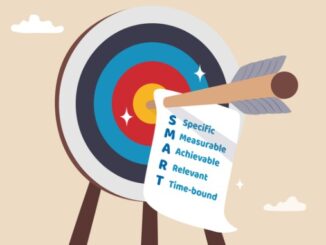
In setting strategic objectives, companies usually end up with a list of worthy but vague aspirations – Graham Kenny discusses how to identify the right strategic goals for your organisation
CREDIT: This is an edited version of an article that originally appeared on Harvard Business Review
The secret to getting a list of clearly defined and measurable objectives is to anchor them in what you, as a company’s leaders, want to get from your stakeholders. This leads you to defining desired behavioural outcomes, even fairly obvious ones like buying more.
The debate can then move to thinking about how to trigger those behaviours, and progress toward these outcomes can be described in measures that are in pounds, like revenue; quantities, like units sold; or percentages, like market share.
Thinking in this way sounds prosaic, even obvious, but it is an effective way of getting a management team to think clearly about what they need to do.
Here are three steps to identify the right strategic goals for your organisation.
Step 1: Identify a behavioural outcome for each stakeholder group
To illustrate, Kenny share’s a story. One CEO he advises, Stuart, heads up a mutual bank with ‘members.’ Kenny ran a workshop for him and his managers. They identified the credit union’s key stakeholders, one of which was, naturally, members. To break through the traditional brainstorming hodgepodge, Kenny asked the group a seemingly simple question: ‘What do you want your members to do?’
“This came as a surprisingly fresh approach to the group and required them to think more deeply. After some discussion, they got this: “To get members to borrow more and to get potential members to become members.” Kenny explained how he calls this a behavioural outcome.
Step 2: Convert behavioural outcomes into organisation objectives
Kenny then led Stuart’s group to the second step, which is to convert this behavioural outcome to an organisation objective. This usually starts with ‘to increase’ or ‘to decrease.’ After careful consideration and debate, the group agreed to: ‘To increase revenue from current and future members.’ Notice ‘future.’ This will be driven by positioning on the strategic factors relevant to members.
Why didn’t Kenny just start there at the second step? The reason is that invariably the process falls back into becoming a hodgepodge. Identifying a behavioural outcome for each key stakeholder group first anchors organisation objectives, which then become clear and measurable.
Step 3: Identify measures
This brings him to the third step: identifying measures, a short list of which is usually referred to as key performance indicators or KPIs. This can be tricky, as all sorts of things become labelled as KPIs in exercises like this. In the past, Stuart’s organisation had labelled actions by individuals and program descriptions as KPIs. So, he needed to point out that a key performance indicator is a key performance measure.
The clincher for Stuart and his group came when Kenny demonstrated that there are only three ways to measure results in business and that they can be neatly summarised by three symbols: £ (or the local currency), # (number of), and % (percentage). No one had condensed results for them in that way before.
The advantage of this is that Stuart and his team now have a stakeholder-oriented objective for members that can be measured. Stuart can measure the total revenue generated by new and existing members; the number of new and existing members; and the bank’s percentage of market share. Any strategies aimed at creating competitive advantage — around, for example, product range, customer service, and pricing — can be evaluated using these hard results.
Kenny does this for each of an organisation’s key stakeholders: customers, employees, suppliers, and so on. It always gets a management group to probe what the organisation is really trying to achieve.
Your objective-setting journey
If you want to produce clearly targeted strategy, you simply must avoid the standard practice of brainstorming to yield a list of strategic objectives. It leads to a hodgepodge of difficult-to-measure items. Instead, rethink your journey by identifying who your key stakeholders are — and what you want from them.
This will provide you with clear and measurable outcomes that will help focus your organisation’s strategic positions for each of your key stakeholders. Strategic clarity will be your result.


Be the first to comment